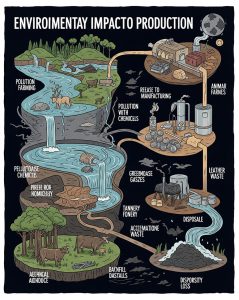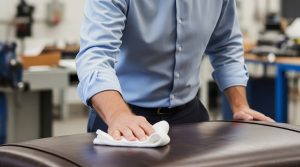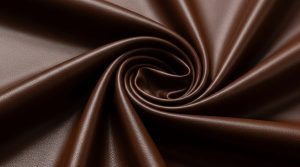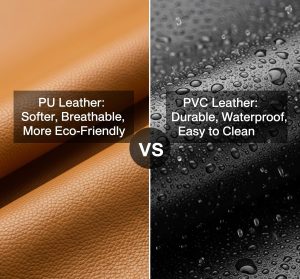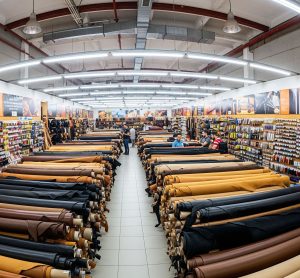
Imagine: you are sitting on a brand new sofa enjoying a delicious cup of coffee, and suddenly – oh—— You spilled coffee. If it’s a fabric sofa, you will panic. You grab a tissue and scrub frantically, praying that the stains won’t solidify. But what if it’s a leather sofa? Just wipe lightly, as if nothing has happened. This is the magic of leather – low maintenance cost, high durability, and no need to worry about stubborn stains. In this article, we will delve into why leather is superior to fabric in terms of cleaning, so that you can spend less time scrubbing and more time enjoying life.
Why is leather easier to clean?
Leather, whether it is genuine leather or synthetic leather, is generally considered easier to clean than fabrics. Unlike fabrics that easily absorb liquids and stains, leather has moisture resistance, making stains easy to wipe off. This characteristic makes leather a low maintenance choice for furniture, car seats, and clothing.
Non porous advantage: Anti fouling properties of leather
One of the main advantages of leather is its non porous surface. Unlike fabrics that absorb spills and retain stains, leather naturally has moisture resistance. This means that cleaning up spills is as simple as using a damp cloth.
Simple and effective cleaning methods
The maintenance workload for leather is very small. Usually, simply wiping with a damp cloth is sufficient to meet daily cleaning needs. For deep cleaning, mild soap and water or specialized leather cleaner can be used. Occasional adjustments can help maintain the softness of genuine leather and prevent cracking.
On the other hand, fabrics need to be regularly vacuumed to prevent dust accumulation. Local cleaning may be tedious and require the use of cleaning agents or stain removers. Even with proper care, some stains remain stubborn and may require professional cleaning.
Leather and Fabric: Durability and Maintenance
Leather is very durable and can maintain its appearance for many years with minimal maintenance. High quality leather can last for decades with proper maintenance, while fabrics typically show signs of wear and tear within a few years.
Leather is also more resistant to odors than fabric. Due to its non absorption of liquids or sweat, it can maintain freshness for a longer period of time. However, fabrics retain the odors of spills, pets, and smoke, making it more difficult to maintain cleanliness over time.
Cleaning Genuine vs. Faux Leather
Although both genuine leather and synthetic leather are easier to clean than fabrics, their maintenance is slightly different:
Genuine leather: requires occasional conditioning to prevent cracking. It is best to use specialized leather cleaners or mild soap and water for cleaning.
Artificial leather (PU or PVC): easier to maintain as it does not require conditioning. Usually, wiping with a damp cloth or mild detergent is sufficient.
Fabric cleaning: a process with higher labor intensity
Textiles require more complex cleaning processes, including:
Regular vacuuming – Fabric furniture requires frequent vacuuming to remove dust, dirt, and pet hair.
Local cleaning – Stains must be immediately treated with mild cleaning agents or stain removers, and some stains may still require professional care.
Deep cleaning – Fabric sofas, car seats, and clothing may require the use of steam cleaners or wet vacuum cleaners for deep cleaning, which can be time-consuming and expensive.
Even after cleaning, the fabric may still show signs of wear and some stains or odors may never completely disappear.
Practical tips for cleaning leather
To ensure that your leather items remain in good condition:
1. Overflow: Immediately wipe dry with a dry cloth, then wipe clean with a damp cloth or leather cleaner.
2. Regular cleaning: wipe the surface with a soft cloth; For deep cleaning, please use leather specific cleaning agents.
3. Conditioning: Use leather conditioner every 6-12 months to keep the leather soft and prevent cracking.
Avoid using irritating chemicals: Do not use abrasive cleaners, alcohol, or silicon-based products as they can damage the leather surface.
conclusion
Leather is easier to maintain, durable, and less prone to stains, making it superior to fabrics. Whether used for furniture, car seats, or clothing, leather can bring long-term benefits and requires minimal cleaning effort. Fabrics may be softer or more breathable, but require more care to maintain a fresh appearance.
For those seeking fashionable, low maintenance, and time tested materials, leather (whether genuine or synthetic) remains the ultimate winner. Investing in leather means less spillage, stains, and cleaning pressure, allowing you to enjoy its luxurious appearance and feel without any hassle.



